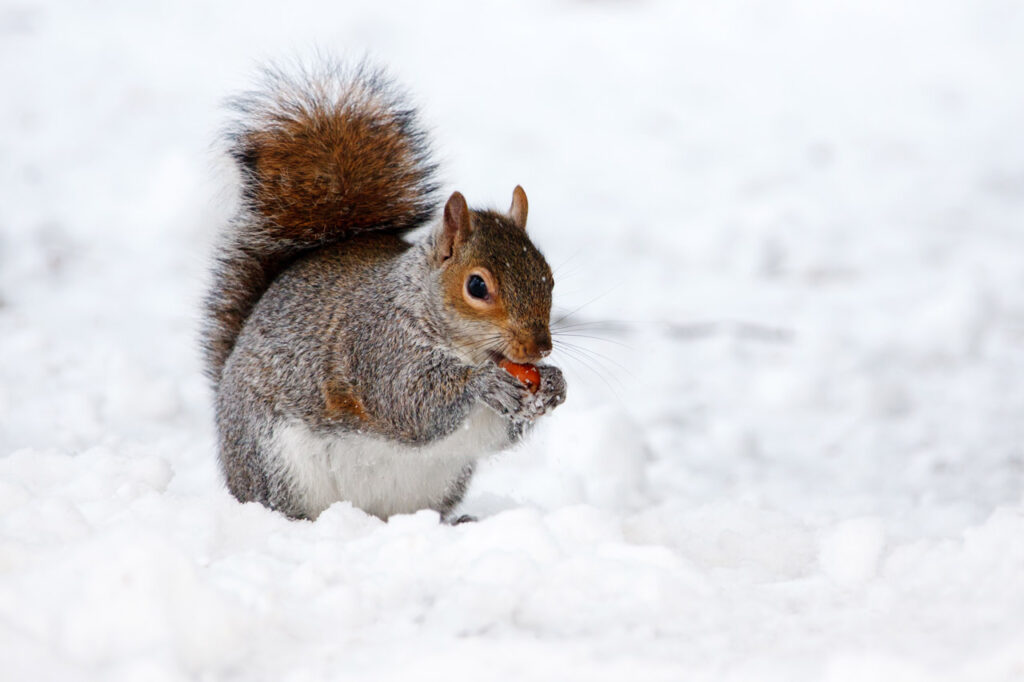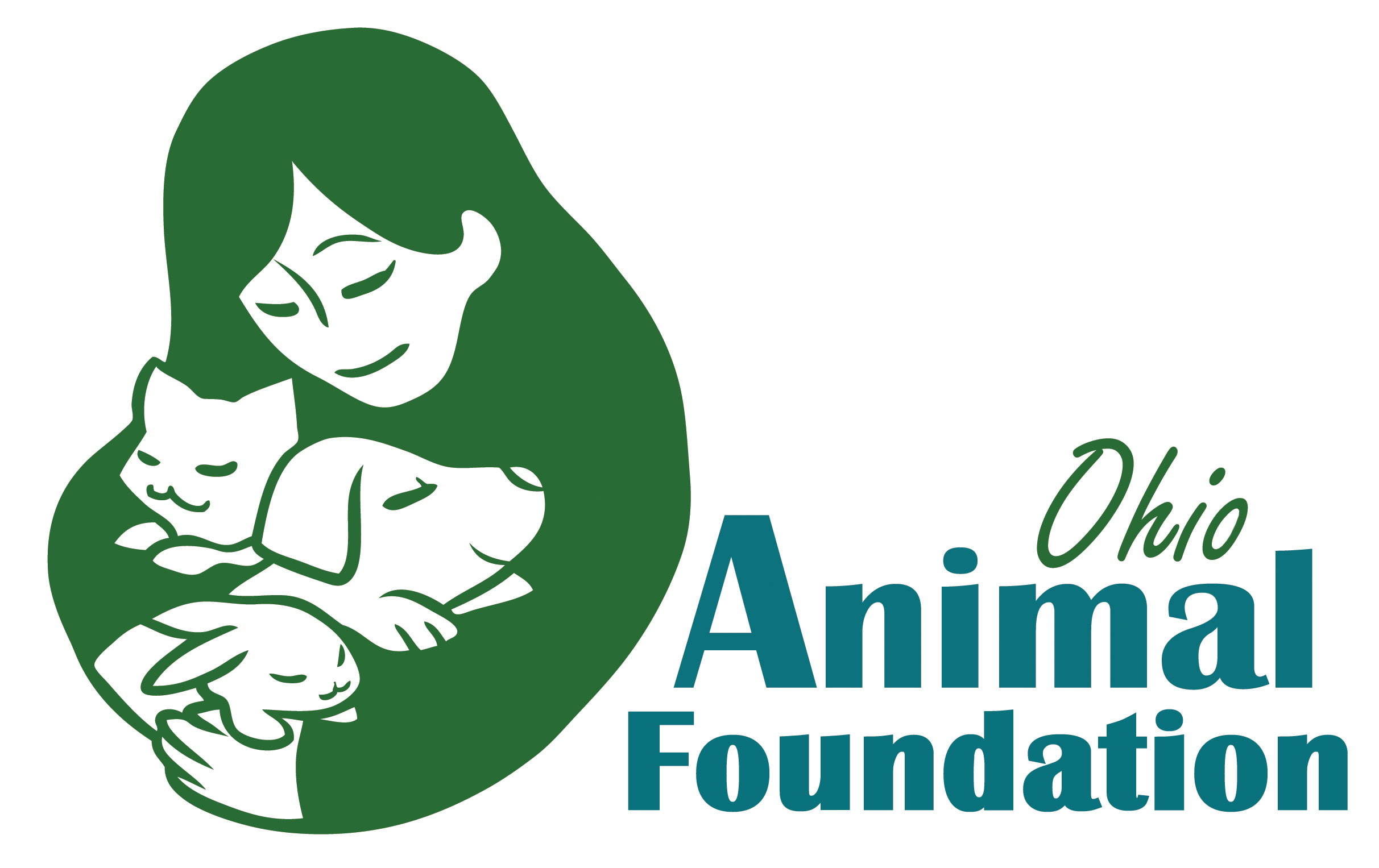In the middle of cold winter months in Ohio, the temptation for us is to retreat into our homes and stay warm. But for our outdoor animal friends, keeping warm and safe during the winter can look very different.
There are many ways we can help outdoor animals get safely through the winter.
Helping Outdoor Cats

Stray/outdoor cats are animals that many see during the winter months, and Gwendolyn Hoogendoorn, vice president for Ohio Wildlife Rehabilitators Association, shares tips to help cats during winter, including how to provide appropriate shelter, food and water.
Effective Shelter for Cats
“Shelter is critical in the winter months,” Hoogendoorn said. “There are several useful ways to provide inexpensive, yet suitable shelter whether you have covered space or open area.”
If you have the means to purchase and support a canvas, heated home, there are options available on chewy.com and amazon.com.
These require a covered area with an electric source and Hoogendoorn said cats love them.
If you’re looking to use materials you have at home to construct a do-it-yourself (DIY) shelter, there are a few options:
- If moisture is not an issue, and you have a barn, open-door shed, covered porch or deck that is well-protected from the elements, a cardboard box can be used. “Close the box and tape it to stabilize it; then cut an opening in the side large enough for an adult cat and stuff with plenty of straw. The cats will make a nest and pack down the straw. Feral cats are shy and don’t like to be in wide open spaces especially when they are at their most vulnerable (while sleeping). So, place the boxes in corners, near escape routes or areas where they are less likely to feel threatened. If there are multiple cats, use multiple boxes. If they don’t care for each other, place the boxes as far apart as possible to avoid unnecessary confrontation. This goes for feeding as well,” said Hoogendoorn.
- If a moisture-free area is not feasible, Hoogendoorn suggests making a shelter out of plywood (you can even have the hardware store cut it into appropriately-sized pieces if you don’t have a large saw). Construct a simple box by nailing the pieces together, cutting a hole big enough for a cat to get through. She emphasizes that filling these shelters with straw will keep the animals warm. If blankets/towels are used, the material traps moisture and can freeze. Cover the shelter with a tarp to keep the wood from soaking.
Styrofoam is a good material for a DIY shelter, and plastic tubs are also options, but make sure they are anchored down. Hoogendoorn said styrofoam is by far the warmest, but make sure to really anchor it down, and to use packing/duct tape to secure the lid of the styrofoam container. Don’t forget to cut an opening in the side.
While plastic tubs work, they can get very cold, so Hoogendoorn said that lining a plastic tub with styrofoam will insulate it better.
If using styrofoam and/or plastic tubs,try to place them in covered areas. “If putting a cat house outside, try to place in a protected area. Take notice of which way the wind blows (typically from west to east) and position the opening away from that. Also, make certain to place on higher ground versus low areas where water accumulates. If I worry about flooding, I will place on a pallet or 4” x 4” wood blocks to keep it up off the ground,” she said.
If you’re wondering whether other animals will set up residence in your cat shelters, the answer is maybe. Raccoons are commonly a concern. However, Hoogendoorn notes that while raccoons will seek shelter in your garage or shed, she doesn’t often see them getting into cat shelters since they prefer to be up high vs. low to the ground.
She has seen another familiar critter taking refuge in her shelters: the opossum. Neither the opossum nor the raccoon hibernates, and the opossum is susceptible to frostbite because of their delicate ears and bare tail. Because they eat ticks, grubs and even venomous snakes, she welcomes them into her shelters, even providing additional boxes for them.
Food and Water for Cats
If you wish to provide food and water for cats during the winter, Hoogendoorn offers this advice:
- Place food in a protected area from snow and rain. Staying warm burns up a lot of metabolic energy so animals tend not to move around needlessly in the winter months.
- Dry food is usually your best choice for much needed calories.
“When you are supplemental feeding, just remember… ALL animals are cold and hungry, not just the ones you specifically want to feed,” Hoogendoorn stressed. “Don’t get upset when that skinny little raccoon has found an easy meal. He’s not trying to make you mad eating the food you set out for the cat, he’s just trying to survive.” She recommends putting the cat’s food out in the mor
ning and taking it in at night if you want to keep raccoons at bay.
Caring for Backyard Wildlife
 Nuts are great options for squirrels, such as walnuts, pecans and almonds. Hoogendoorn notes that the squirrels enjoy the nuts she leaves out, since they do not hibernate and competition for food is tough in the wintertime. She also provides ears of dried corn as another source of food.
Nuts are great options for squirrels, such as walnuts, pecans and almonds. Hoogendoorn notes that the squirrels enjoy the nuts she leaves out, since they do not hibernate and competition for food is tough in the wintertime. She also provides ears of dried corn as another source of food.
Seed feeders can also be Seed feeders can also be beneficial to backyard birds. If you do use a feeder, make sure it is cleaned every few weeks. “Birds congregate at feeders where sickness spreads. Think about when you go to a heavily populated area and everyone is passing around colds… it’s the same for birds. Conjunctivitis is a common issue with finches and sparrows. Simply washing the feeders in soapy water goes a long way to reducing the spread of germs/disease. Spacing feeders helps too,” she said.
Bird houses – which should be up high enough away from predators and facing away from prevailing winds – can be a source of shelter, although not all birds prefer to use them.
Toni Stahl, a Habitat Ambassador certified by the National Wildlife Federation as a Certified Wildlife Habitat program volunteer, trains people how to care for wildlife in their yards and train them about native plants, invasive plants and how to care for the yards sustainably. Her Nature Scoop newsletters are also full of helpful information on taking care of wildlife. Check out www.backyardhabitat.info.
Toni offers the following tips for feeding birds during the winter:
- Brush snow away from leaves so birds can scratch around and find winter food.
- Cover the tops of bird feeders to keep seed dry and accessible.
- Feed high-fat foods until insects come back. High-fat foods include black-oil sunflower seed chips (without shell) and pieces of suet.
- Some birds, such as robins, have soft beaks that make it difficult to break through ice and crack seed shells and their preferred berries can be either scarce or frozen. To help the birds, put ice-free water 10-15 feet from cover and feed sunflower seed chips with shells removed, cranberries or broken up suet.
Keeping water sources available to birds (and mammals) is critical, too. Menard’s and Amazon.com both have inexpensive heated bird baths to keep birds comfortable all winter. Stahl recommends brushing snow off the edges of bird baths with a soft brush.
Waterfowl Need Help, Too
According to Hoogendoorn, for those who live near waterfowl, cracked corn and waterfowl pellets are a good way to keep them fed. Also, because domesticated and wild ducks cohabitate, keep in mind domesticated ducks do not have as much experience foraging for food. Visit your local feed store for cracked corn, which will be less expensive there than from a grocery or hardware store.
However, Hoogendoorn warns to avoid feeding bread. “Feeding bread is extremely unhealthy and has zero nutrition. Not only does it lead to malnutrition and birth defects of ducklings, but moldy breads can lead to death,” she said.
Your Backyard is a Wildlife Habitat
Both Stahl and Hoogendoorn promote planting native plants to help encourage insects and help wildlife thrive.
Fall leaves are very beneficial for supporting wildlife in your backyard. “Going into winter, I ‘leave my leaves.’ Decomposing leaves not only provide much needed nutrients to the soil, giving your lawn and gardens fertile space, but they also harbor insects which help support migrating birds stopping for a quick meal and resident birds through the winter,” she said.
Hoogendoorn also notes that not all birds are seed eaters (such as robins and bluebirds), so she leaves her native plants standing for the birds as well.
“Robins tend to be one of those birds I worry about. When I was a kid, it was a huge deal to see the first robins of spring. Now they never seem to leave. Robins are not big seed eaters…When unexpected snow storms hit and the birds cannot get to the ground for many days to search under the leaves for bugs, we tend to see emaciated, dying robins,” Hoogendoorn said. “I encourage people to forgo those non-native plants which look pretty but do nothing to support our wildlife. Instead, plant a crabapple or two, some native holly bushes, hackberry, serviceberry and dogwood. These help sustain our native birds.” — Liz Hosfeld
